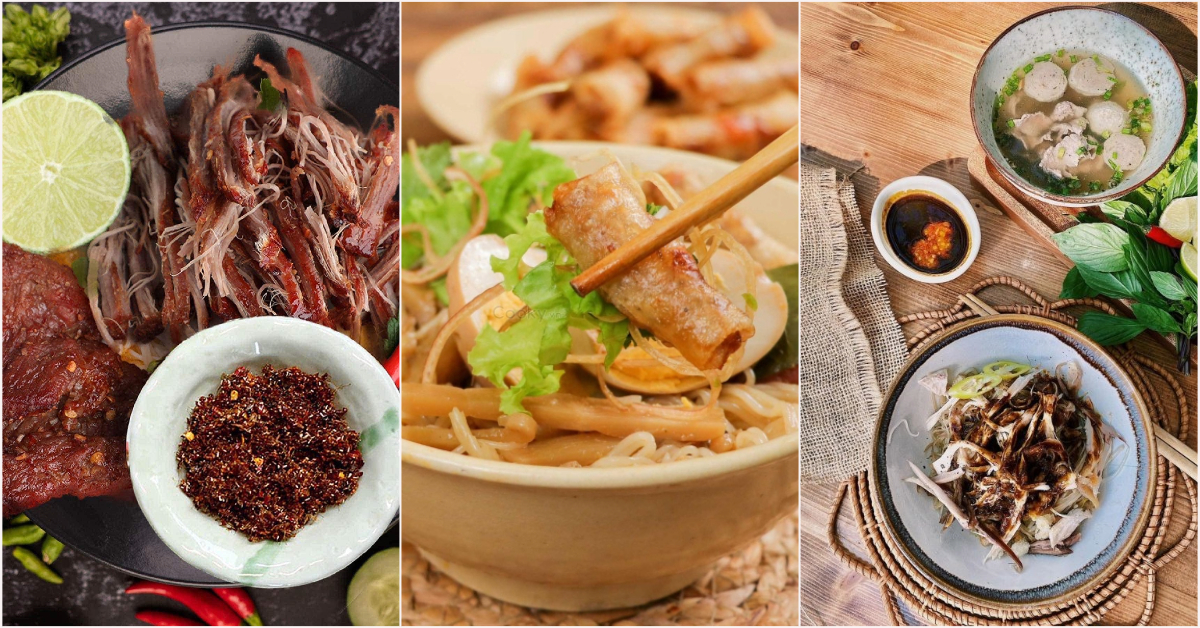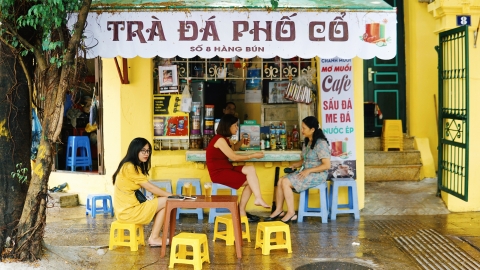When it comes to Central Highlands cuisine, people always think of grilled chicken, bamboo rice, and can wine. However, Gia Lai cuisine does not stop there, but also brings many attractions thanks to the richness and uniqueness of dishes from luxury restaurants to street food, creating a unique feature of the sunny and windy basalt land.
Gia Lai Pho with two bowls – both unique and delicious
If beef noodle soup is a specialty of Hue, eel vermicelli is famous throughout Nghe An, then pho hai to is the dish that makes the brand of Gia Lai mountain town cuisine, leaving many unforgettable impressions in the hearts of diners from far away.
The name "Pho Hai To" comes from the unique way of serving: one bowl for dry pho noodles and another for special broth. A difference that is easily recognized from the name. Usually pho is served with broth, but in Gia Lai, people prefer to eat dry pho, which is more similar to mixed pho.
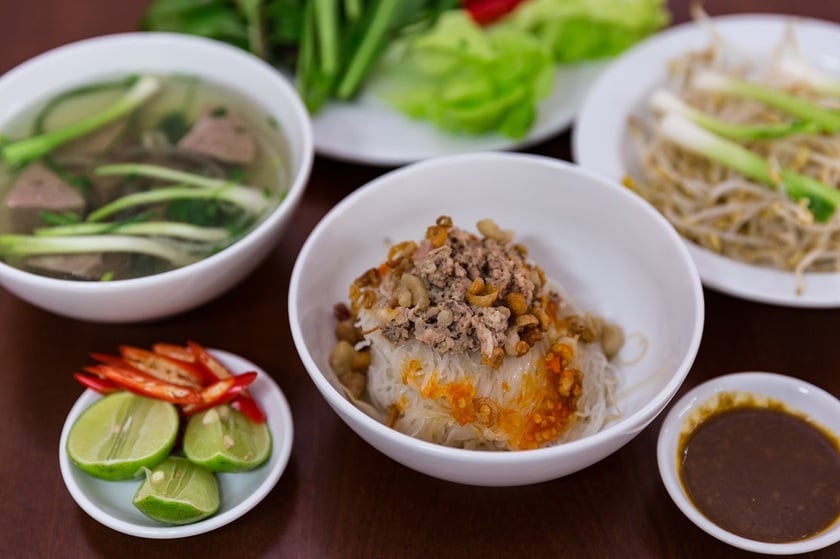
You can find two-bowl pho restaurants everywhere on the streets of Gia Lai, bustling with diners, as proof of a typical dish of the great mountain town.
Gia Lai pho noodles are also unique. They are made from rice flour, but are not pressed thin and soft like regular pho noodles. Instead, they are round, thin and quite chewy. When placed in a bowl, the pho noodles are topped with fried onions, blanched bean sprouts, pork rinds, minced pork and beef. Besides, diners also find a bowl of sweet broth, sprinkled with green onions to enhance the aroma and freshness.
The owner of Pho Nu - a 40-year-old dry pho restaurant in Gia Lai that is very popular with locals said: "However, the real soul of this dish lies in the pho sauce. This is not the usual black sauce, but a rich sauce with a unique nutty, salty and sweet taste. This sauce is made from crushed soybeans, fermented, creating a special sauce, making the flavor of the two-bowl pho dish unmistakable from any other dish."
Bun mam cua - unforgettable strange flavor
This dish has a distinctive aroma, which when first encountered, may feel quite challenging. That is also the reason why bun mam cua is also called "stinky crab vermicelli" by locals, as well as a way to distinguish it from other types of bun rieu and bun cua.
Making this noodle dish is not easy at all. Fresh and delicious field crabs are selected with large size, the crab body is taken, the other parts are removed, and then crushed to filter the crab juice. The crab meat is filtered and pureed and then fermented for 1-2 days until it smells good. Fresh crab juice is also fermented by people for about 1 day until it turns black, has a strong smell, and is a bit difficult to smell before being processed.

Coming to Gia Lai, the challenge of eating crab noodle soup is also an experience worth trying.
Ms. Chi, the owner of the famous crab noodle soup shop in Pleiku, brings out a bowl of finished noodles to serve the customers. The bowl is filled with bamboo shoots, crispy fried pork skin, spring rolls, and fermented pork rolls arranged on top of fresh noodles, with the fragrant smell of crab sauce filling the bowl.
"This dish must be eaten with fresh raw vegetables, a little lemon and crushed fresh chili. To make the stinky crab vermicelli more fatty and delicious, enjoy it with duck eggs stewed in the broth. The eggs are dyed black, with a faint, strange taste of fermented crab meat. There are people who have eaten one or two bowls and are still hungry, because this unique combination of flavors is not easy to find anywhere else," Ms. Chi shared.
Grilled skewers and grilled beef in Gia Lai, you will be so addicted that you will forget your way home.
Grilled skewers or grilled beef wrapped in betel leaves in Pleiku are attractive snacks that not only captivate the youth of the mountain town during their night walks, but also make diners from far away completely immersed in the unique flavors, forgetting the way home.
The skewers are neatly arranged on the grill, placed on the charcoal fire, giving off an intoxicating aroma to the corner of the street. Each skewer consists of 4 to 5 small spring rolls, grilled while being evenly coated with a layer of fragrant fat. The sizzling sound and the aroma of the grilled skewers awaken all the senses. The grilled skewers here are always crispy, when rolled with rice paper, raw vegetables and fresh noodles, dipped in sweet and sour tamarind sauce, all blend together to create an irresistible flavor.
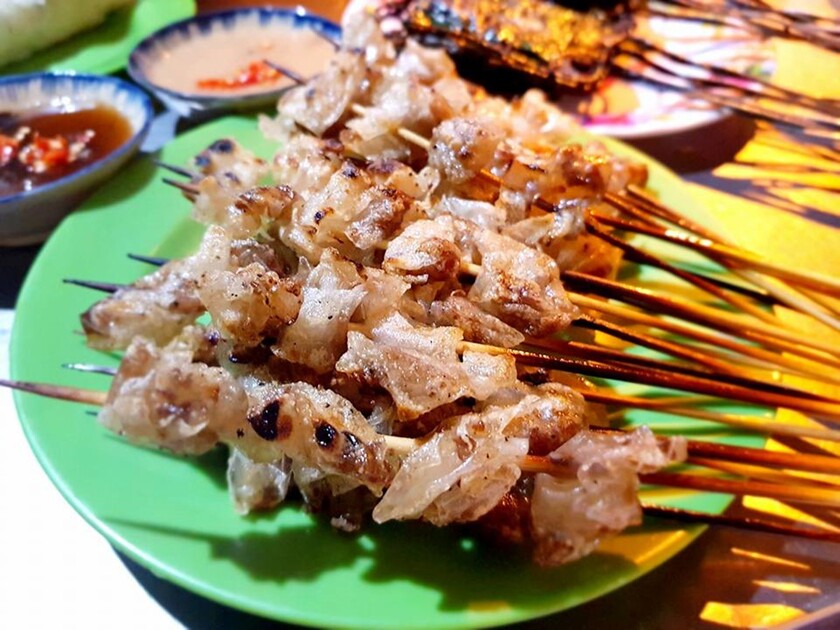
Grilled skewers, a snack of many generations of Gia Lai people.
Ha Vy (Pleiku City, Gia Lai) shared: "This is a dish associated with the childhood of many people, including me. Late afternoons after school, the weather in the mountain town is chilly, the whole group gathers to sit at the grilled skewers stall on the corner of the street next to the school. You will not be able to find anywhere else that has grilled skewers with delicious, distinctive flavors like in Gia Lai."
Not to be outdone, grilled beef wrapped in lolot leaves is also a wonderful taste experience that diners should try on a cold Pleiku night. The beef is tender and sweet, wrapped in fragrant lolot leaves, chewy and delicious. The most special thing is the dipping sauce, like a "highlight" that makes everything on the table perfect. The dipping sauce with its characteristic, attractive aroma, diverse flavors of sour, spicy, salty, and sweet, further enhances the deliciousness of this dish.
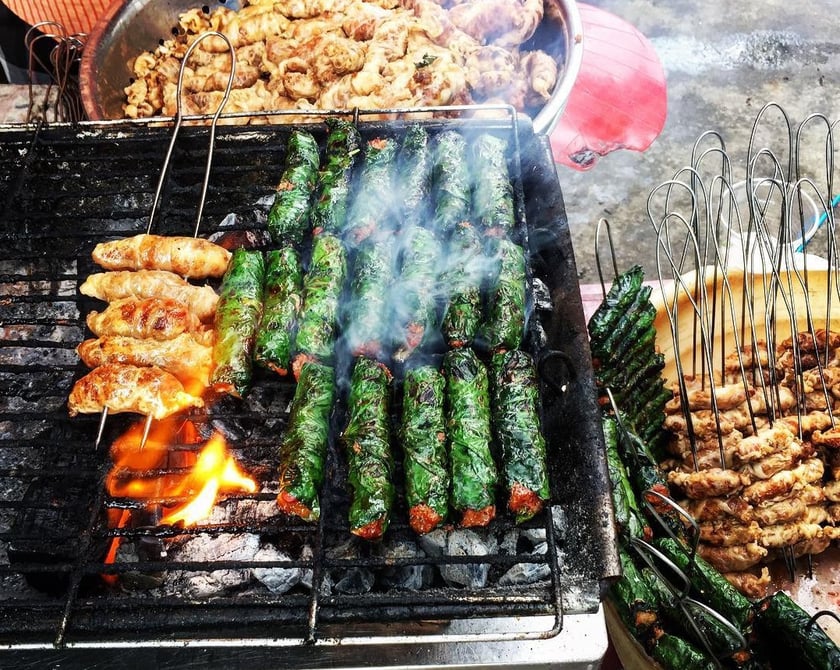
It is not difficult to come across grilled skewers and grilled beef wrapped in betel leaves on the streets of Pleiku at night.
Sun-dried beef with yellow ant salt
Visiting the “fire pan” of Krong Pa on hot summer days, you will witness the locals making Gia Lai’s specialty of one-sun-dried beef with yellow ant salt. In the midst of the scorching sun, local women are still diligently drying large pieces of meat. To create this dish, locals must choose quality beef, raised free-range on the mountains all year round, and fed naturally from plants and grass.

Sun-dried beef with yellow ant salt - a specialty of the Krong Pa people.
The beef is carefully marinated with special spices. When eating, the beef only needs to be grilled briefly on a charcoal stove to keep the meat sweet and naturally chewy. The indispensable special feature of this dish is the yellow ant salt, made from yellow ants that live naturally in the forest. This salt must be mixed according to the secret recipe of the Krong Pa people to be delicious.
When enjoying, diners will immediately feel the delicious flavor of lemongrass, the fatty, attractive taste of yellow ants, and the characteristic aroma of basil leaves spreading in the mouth. This is a culinary experience that you will hardly forget in your journey to discover Gia Lai cuisine.
Rice flour noodle soup - a unique dish of the mountain town
Gia Lai noodle soup is both familiar and strange. Familiar because a bowl of noodle soup can be found in almost any other province, but strangely, the noodle soup here has a very unique flavor, bringing out the flavor of the Gia Lai mountains.
When the noodle soup is cooked and served, the color of the ingredients in the bowl is harmonious. According to the experience of the owner of the noodle soup shop O Hai (54 Nguyen Dinh Chieu, Pleiku City): "A delicious broth is a beautiful golden yellow color. The flavor of the noodle soup bowl at this time becomes even more unique because of the combination of ingredients put into the noodle pot. Gia Lai people eat spicy food well, so almost every noodle pot has the spicy taste of pepper and chili. On the table, there are also jars of Siamese chili soaked in fish sauce, thanks to which the taste buds as well as the sense of smell of the person enjoying it really explode because of the deliciousness and full flavor of this special dish."

It can be said that Gia Lai rice noodle soup is a specialty that you should experience when coming to this land.
Usually when enjoying Gia Lai noodle soup, people add raw vegetables such as baby cabbage, herbs and bean sprouts to the bowl to make the dish more rich. On the bowl of noodle soup, you also often see pepper and finely chopped cilantro, making the dish more beautiful and attractive.
Although the ingredients may be similar to banh canh in other places, perhaps due to the different cooking method, Gia Lai banh canh also seems to have a more unique taste, eating it once is unforgettable.





